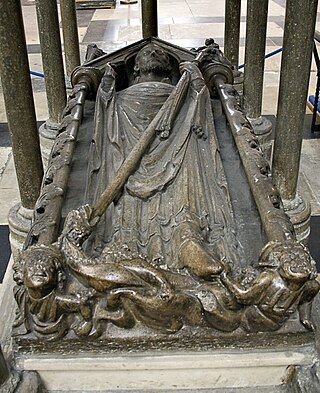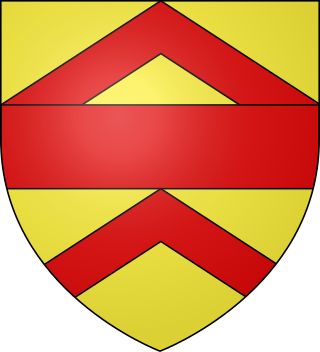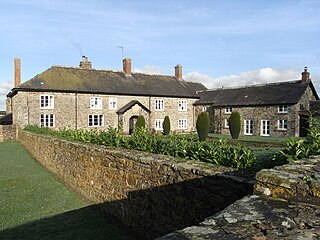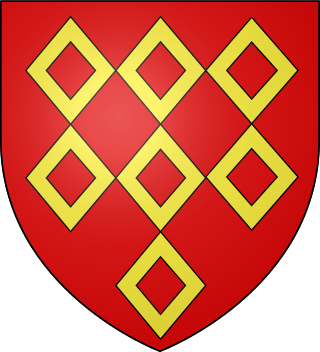Related Research Articles

William Marshal, 1st Earl of Pembroke, also called William the Marshal, was an Anglo-Norman soldier and statesman. He served five English kings—Henry II, his sons the "Young King" Henry, Richard I, and John, and finally John's son Henry III.

Walter de Gray was an English prelate and statesman who was Archbishop of York from 1215 to 1255 and Lord Chancellor from 1205 to 1214. His uncle was John de Gray, who was a bishop and royal servant to King John of England. After securing the office of chancellor, the younger Gray was a supporter of the king throughout his struggles and was present at the signing of Magna Carta in 1215. After two unsuccessful elections to a bishopric, he became Bishop of Worcester in 1214 but soon after moved to York. During the reign of John's son, King Henry III, Gray continued to serve the king while also being active in his archdiocese. He died in 1255 and was buried at York Minster, where his tomb still survives.

William de Valence, born Guillaume de Lusignan, was a French nobleman and knight who became important in English politics due to his relationship to King Henry III of England. He was heavily involved in the Second Barons' War, supporting the King and Prince Edward against the rebels led by Simon de Montfort. He took the name de Valence after his birthplace, the Cistercian abbey of Valence, near Lusignan in Poitou.

Eleanor Maltravers, or Mautravers, was an English noblewoman. The granddaughter and eventual heiress of the first Baron Maltravers, she married two barons in succession and passed her grandfather's title to her grandson.

Anne of Gloucester, Countess of Stafford was the eldest daughter and eventually sole heiress of Thomas of Woodstock, 1st Duke of Gloucester, by his wife Eleanor de Bohun, one of the two daughters and co-heiresses of Humphrey de Bohun, 7th Earl of Hereford, 6th Earl of Essex (1341–1373) of Pleshy Castle in Essex.

Joan de Munchensi or Munchensy, Lady of Swanscombe and Countess of Pembroke, was the daughter of Joan Marshal and granddaughter of William Marshal, 1st Earl of Pembroke and Isabel de Clare, 4th Countess of Pembroke suo jure.

Robert FitzWalter, 1st Baron FitzWalter was an English peer.
Walter Fitz Robert of Woodham Walter, lord of Little Dunmow, Essex, was steward under Stephen of England, having succeeded to that position upon the death of his father, Robert Fitz Richard. Walter died in 1198 and was buried at Little Dunmow, in the choir of the priory of Austin canons.

Isabel de Forz was the eldest daughter of Baldwin de Redvers, 6th Earl of Devon (1217–1245). On the death of her brother Baldwin de Redvers, 7th Earl of Devon in 1262, without children, she inherited suo jure the earldom and also the feudal barony of Plympton in Devon, and the Lordship of the Isle of Wight. After the early death of her husband and her brother, before she was thirty years old, she inherited their estates and became one of the richest women in England, living mainly in Carisbrooke Castle on the Isle of Wight, which she held from the king as tenant-in-chief.
Isabel de Clare, suo jure 4th Countess of Pembroke and Striguil, was an Anglo-Irish noblewoman and one of the wealthiest heiresses in Wales and Ireland. She was the wife of William Marshal, 1st Earl of Pembroke, who served three successive kings as Marshal of England. Her marriage had been arranged by King Richard I.
Alice de Warenne, Countess of Arundel was an English noblewoman and heir apparent to the Earldom of Surrey. In 1305, she married Edmund FitzAlan, 9th Earl of Arundel.

Maud 'Matilda' le Vavasour, Baroness Butler was an Anglo-Norman heiress and the wife of Fulk FitzWarin, a medieval landed gentleman who was forced to become an outlaw in the early 13th century, who is allegedly linked to the tale of Robin Hood and its origins.

James Audley, 2nd Baron Audley of Heighley Castle, Staffordshire, was an English peer. He was the son and heir of Nicholas Audley, 1st Baron Audley (1289–1316) by his wife Joan Martin, who was the daughter of William Martin, feudal baron of Barnstaple, and Marcher Lord of Kemes. She was posthumously the eventual sole heiress of her brother William FitzMartin to Barnstaple and Kemes.

Walter of Bibbesworth (1235–1270) was an English knight and Anglo-Norman poet. Documents confirm that he held land in the parish of Kimpton, Hertfordshire at the farm now called Bibbsworth Hall. About 1250 he served in Gascony under the seneschal Nicholas de Molis in the army of the English king Henry III. In 1270/1271 he is believed to have taken part in the Ninth Crusade on the evidence of a tençon or poetic argument between himself and Henry de Lacy, 3rd Earl of Lincoln. In the poem Walter, about to depart for Palestine, teases Henry for staying at home for the love of a certain woman. In fact the young Henry de Lacy, "recently married and with heavy responsibilities at home", did not take part in the Ninth Crusade. Walter went and returned. He was buried early in Edward I's reign at Little Dunmow in Essex.

The Treatise is an Anglo-Norman poem written in the mid-13th century by Walter of Bibbesworth, addressed to Dionisie de Munchensi, with the aim of helping her to teach her children French, the language of the Norman aristocracy. It was a popular text in medieval England, and is a very early example of a book intended for reading to children.

Brightley was historically the principal secondary estate within the parish and former manor of Chittlehampton in the county of Devon, England, situated about 2 1/4 miles south-west of the church and on a hillside above the River Taw. From the early 16th century to 1715 it was the seat of the Giffard family, whose mansion house occupied the moated site immediately to the west of the present large farmhouse known as Brightley Barton, a Grade II listed building which incorporates some elements of the earlier house. It is not to be confused with the 12th-century Brightley Priory near Okehampton.
Aveline de Clare, Countess of Essex was an English noble.

The feudal barony of Bampton was one of eight feudal baronies in Devonshire which existed during the mediaeval era, and had its caput at Bampton Castle within the manor of Bampton.

William Ferrers, 1st Baron Ferrers of Groby was an English peer who lived under two kings, Edward I and Edward II. His baronial caput was Groby in Leicestershire.
Margaret de Neville, also Margaret de Longvillers and domina Margareta de Nevill was an English landowner in Yorkshire and Lancashire during the thirteenth and fourteenth centuries. Her inheritance helped to consolidate the power and influence of the House of Neville.
References
- ↑ This identity is accepted by F. M. Powicke, "Bibliographical Note on Recent Work upon Stephen Langton" in English Historical Review vol. 48 (1933) pp. 554-557, and in the Victoria County History , Cambridge vol. 2 (1948) p. 292 and footnote 4
- ↑ Victoria County History , Cambridge vol. 2 (1948) pp. 292-295; Dalby (2012) p. 14
- ↑ Dalby (2012) p. 39
- ↑ Kathleen Kennedy, "Le Tretiz of Walter of Bibbesworth" in Daniel T. Kline, ed., Medieval Literature for Children (London: Routledge, 2003) p. 131; Dalby (2012) pp. 11-12
- Andrew Dalby, transl., The Treatise of Walter of Bibbesworth. Totnes: Prospect Books, 2012. ISBN 978-1-903018-86-6
- Tony Hunt, "Bibbesworth, Walter of" (2004) on the website of the Oxford Dictionary of National Biography (subscription or UK public library membership required)
- Karen K. Jambeck, "The Tretiz of Walter of Bibbesworth: cultivating the vernacular" in Albrecht Classen, ed., Childhood in the Middle Ages and the Renaissance (Berlin: Walter De Gruyter, 2005) pp. 159–184
- H. W. Ridgeway, "Munchensi, Warin de (c.1195–1255)" and "Munchensi, William de (c.1235–1287)" (2004) on the website of the Oxford Dictionary of National Biography (subscription or UK public library membership required)